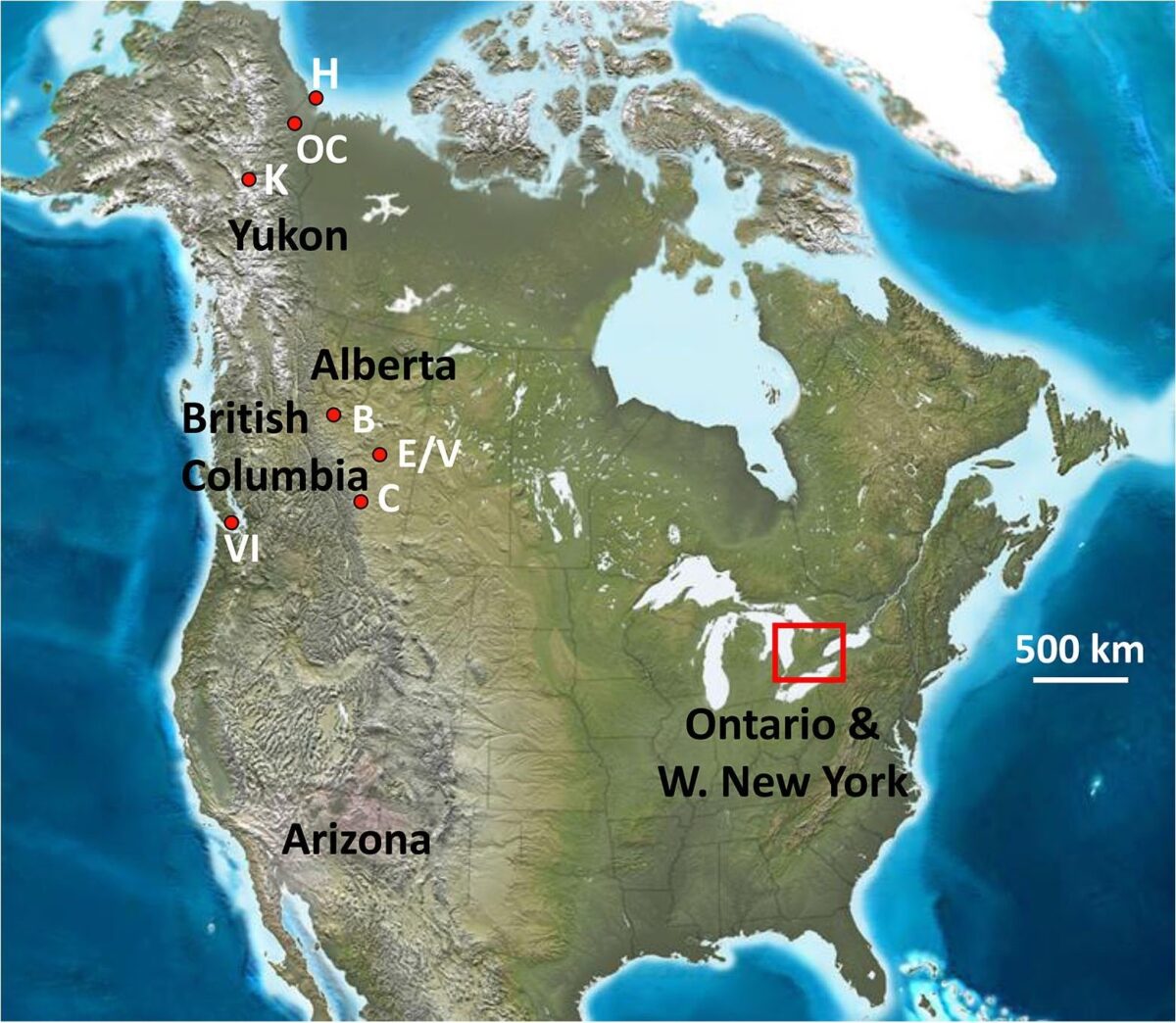by Jessica Z Metcalfe, Fred Longstaffe, Christopher N/ Jass, Grant D. Zazula and Grant Keddie.
ABSTRACT: We investigated the application of stable isotope analysis of proboscidean remains (collagen in bone/ dentin/cementum and structural carbonate in enamel bioapatite) for genus-level identification of isolated specimens, assessment of geographical origins, and testing for nutritional stress. Mammoths (Mammuthus sp.) tended to have higher d15Ncol and lower d13Ccol than mastodons (Mammut americanum), but differences were not significant in every location. Determining the genus of isolated specimens may be possible for locations and time periods with good isotopic baselines, but environmental changes can confound interpretations. For example, an Alberta proboscidean with a d15Ncol of +1.4%o (characteristic of mastodons) ultimately proved to be a mammoth. Its surprisingly low nitrogen isotope composition is attributable to the recently deglaciated environment it inhabited. We provided a baseline for isotopic assessment of geographical origins of isolated proboscideans in Western Canada. Bioapatite d13Csc and d18Osc can be used to distinguish specimens from Alberta, Klondike, Old Crow, Herschel Island and further south (e.g. Arizona, Great Lakes). Finally, we found that an Alberta mammoth with morphological evidence of nutritional stress experienced a change in diet, environment or physiology before death, but its isotopic compositions did not suggest a link to hypothesized starvation (catabolism of proteins or reliance on lipids).
